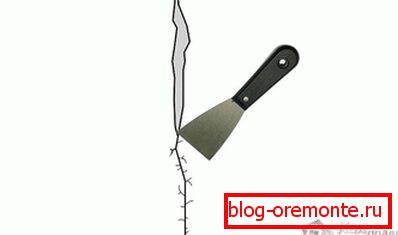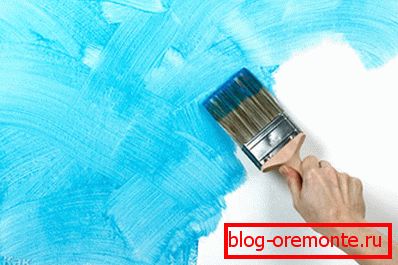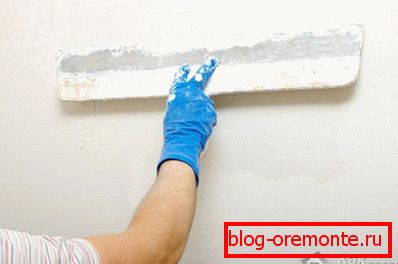Preparing walls for decorative plaster
At the final stage of finishing work, special importance is attached to such a procedure as leveling the walls under the decorative plaster. This is explained by the fact that the well-known advantages of this unique coating are able to manifest themselves only when the surfaces of the walls are perfectly prepared for decoration.
Immediately make a reservation that the known methods of preparatory work do not differ significantly from similar activities carried out before painting or pasting walls with wallpaper. In addition, when implementing them, it is not at all necessary to achieve a completely flat wall surface, because, thanks to its plasticity, the applied material perfectly hides all the irregularities on it.
Stages of preparatory work

It should be understood that the application of plaster is carried out only at the final stage of finishing work, when all window and door openings are already installed and the floor covering chosen by you is completely laid. Surface preparation in this case is as follows:
- first of all it is necessary to remove the remnants of paint, wallpaper and old putty from the finished surface;
- then the walls should be treated with a special primer, ensuring the achievement of a restorative (strengthening) effect;
- in rooms with high humidity, in addition to priming, the walls must be treated with antifungal composition;
- cracks on the walls will need to be embroidered and filled with a special repair compound. In the event that the cracks are very deep and wide - filling them with a special compound is done in several stages;
- after the walls are completely primed, you can proceed to applying a base layer of putty on them, which provides the final leveling of the surface and is the basis for its subsequent finishing with decorative plaster.

In a situation where you plan to apply a thick layer of plaster with a pronounced structure, it is not necessary to putty the surface of the wall. But with a relatively thin layer of coating, preparation of a perfectly flat surface should be mandatory. Otherwise, all the irregularities of the base will not be able to hide under a layer of decor, and the consumption of the material used will increase markedly.
Upon completion of all filler operations, you can proceed to sanding the surface of the walls using fine-grained emery paper.
Expert advice

Surface treatment is made taking into account a number of factors:
- each of the applied layers of putty requires thorough drying (at least 2 days);
- In order to avoid the appearance of cracks, experts recommend using a “serpyanka” (this is how a special self-adhesive mesh is called);
- after the final drying of the filler, it is desirable to treat the surface of the walls with an acrylic primer of deep penetration capable of ensuring good adhesion to the decorative coating;
- hardening of the primer to protect it from delamination can be done through the use of special impregnation. In this case, your chosen filler composition used in the preparation of the walls should have good absorbing properties (for example, the use of materials on an oil-adhesive or alabaster basis is not allowed).
The primer should be applied with the following recommendations:
- the thickness of the primer should be about 2 centimeters; with a smaller thickness, it will be difficult for you to get a high-quality and uniform decorative coating;
- during the grouting process, the primer must be subjected to a compulsory compaction procedure;
- upon completion of priming the surface should be regularly moistened during the week (for this procedure a piece of wet sponge is used).
A surface treated in this way will be completely ready for applying a layer of decorative plaster on it.
Trial plaster application

Particular attention should be paid to the smooth transitions formed between the smooth and texture strips of the coating.